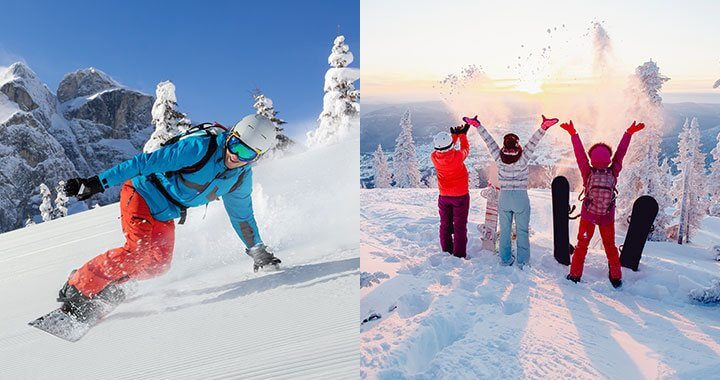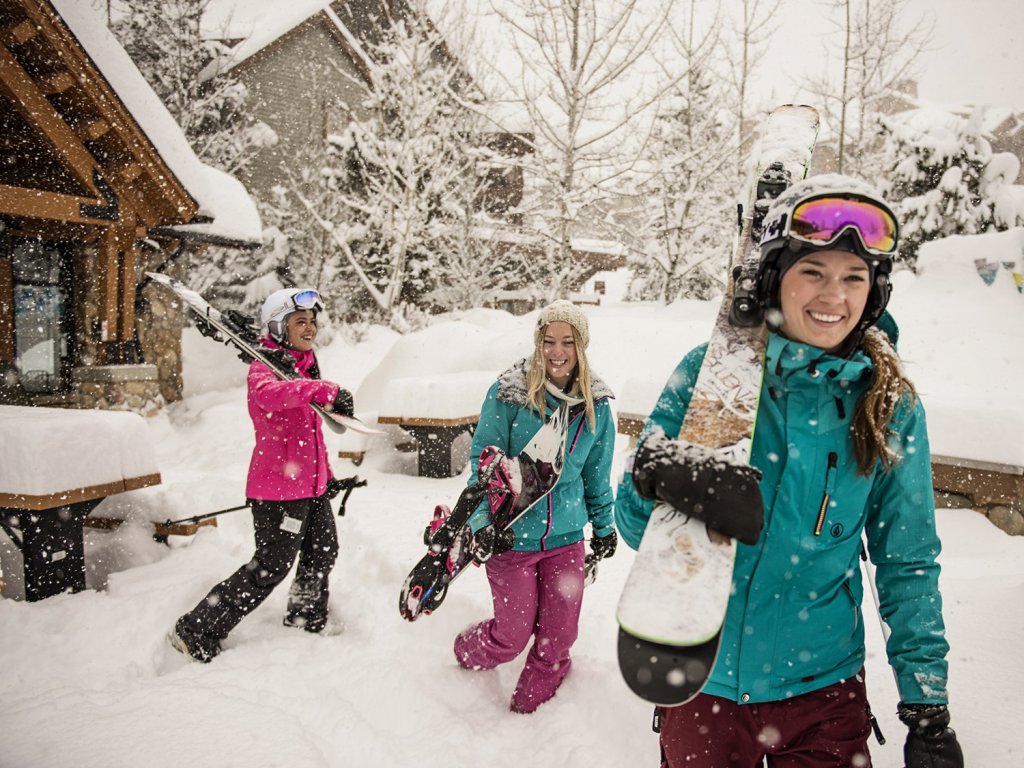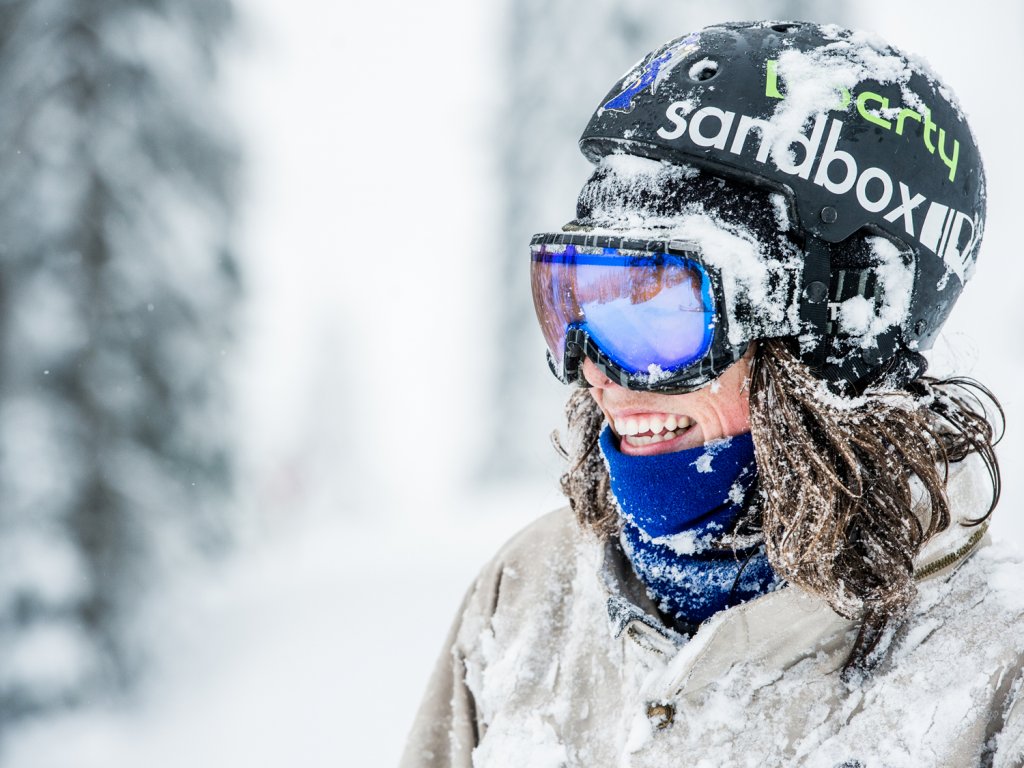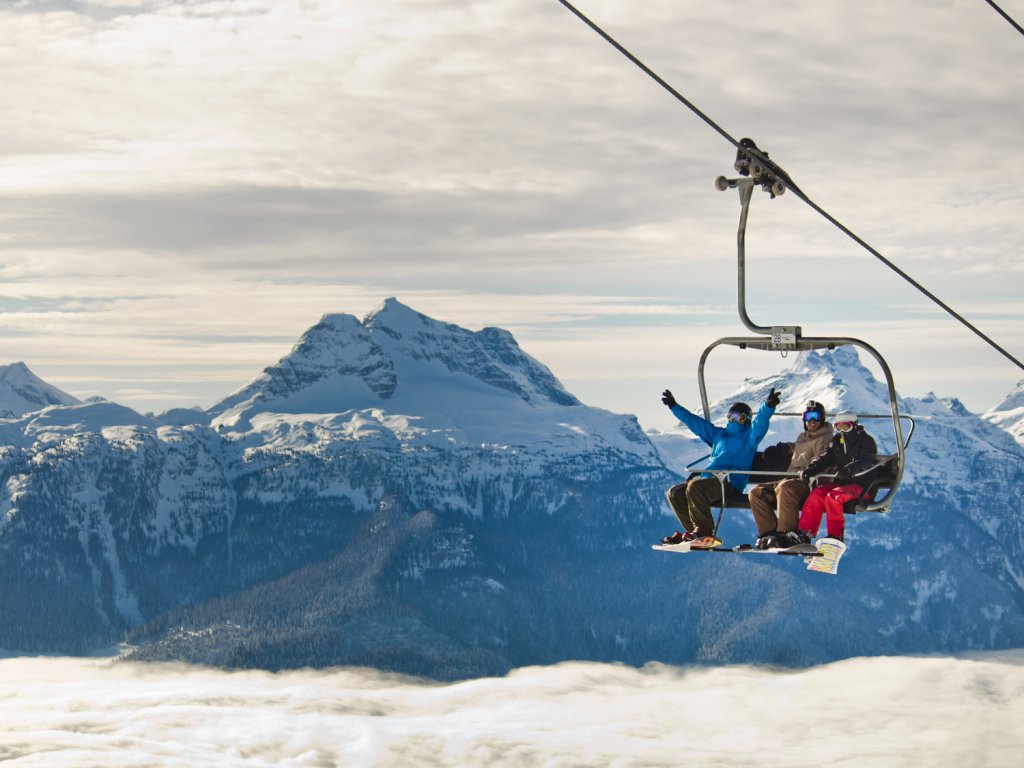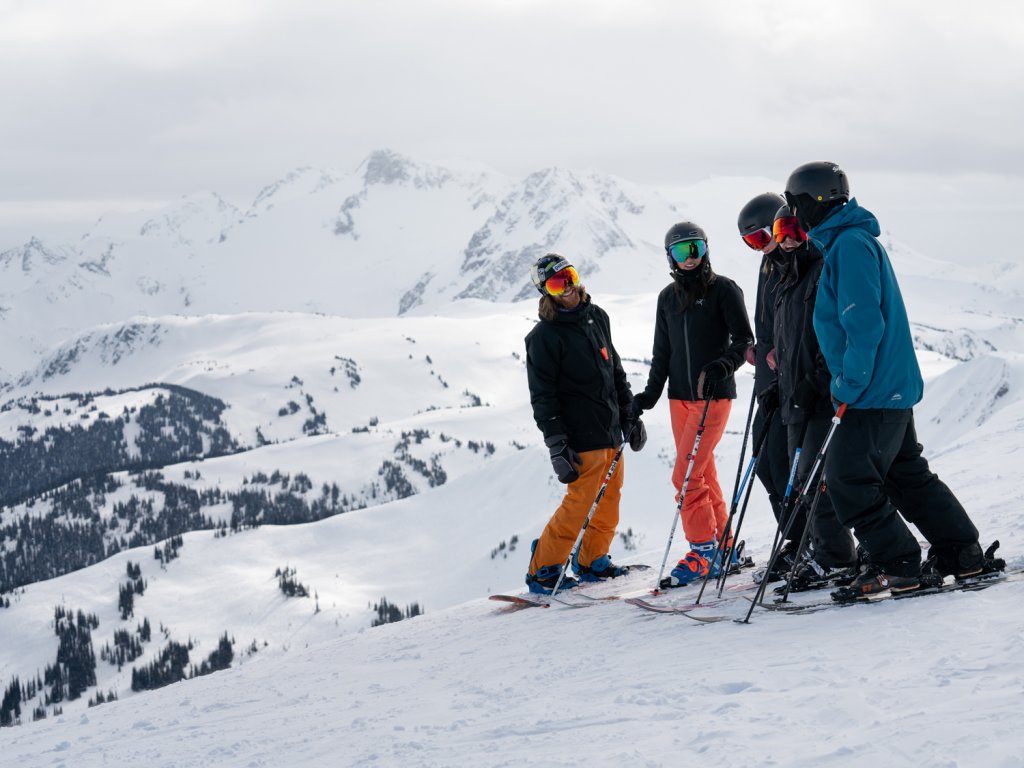Ask anyone who has skied in Canada about the weather and they will tell you that mountain weather can be very unpredictable and sometimes seriously cold. Keeping warm makes for much more enjoyable skiing.
Here are some tips on keeping warm….
Dress in Layers
Your first layer
This should be good quality thermal underwear, top and bottom. Three quarter length thermal underpants help prevent overlaps of ski socks and thermals that can cause serious blistering on your shins. Compression tights are also a very helpful garment.
Whatever you choose to have next to your skin, it should not be 100% cotton. Cotton does not wick sweat and may leave you feeling cold.
Your second layer
This is for your upper body and can be your favourite ski top, a nice warm fleece type material or woollen fitted top. Padded vests are popular with a lot of skiers. Once again, synthetics or merino in the materials is important and helpful.
Your third layer
This will usually be your ski jacket and pants. Quality gear will prevent the cold and wind from getting through and usually includes Gore-Tex or similar products. Unfortunately quality ski gear comes with a higher price tag but cheap gear will let you down when you most need it.
Choose your accessories carefully
If you have not skied in Canada before, you may be surprised at how cold it can get. It is not unusual for the temperature to drop below -150C, or even below -200C. So just wearing a scarf and doing your jacket zip up will not usually be enough.
Helmets
These usually have nice warm linings, especially around the ears, but on really cold days a thin beanie, skullcap or balaclava will provide extra warmth.
Neck warmers
These are vital to protect you from frost bite, with many variations available. A fleece product feels good against the skin and does a great job of keeping the wind out.
Once you have your helmet on and neck warmer pulled up then you will usually need to make sure that your goggles are nice and snuggly fitted in order to ensure that absolutely no skin is exposed to the weather.
Ski Gloves
These come in a bewildering range. Have a look at what your Tour Leaders are wearing on cold days. Glove design is important to ensure that your fingers don’t freeze. Also, ask the Tour Leaders about the most effective way to use the hand warmer gel pads.
Ski Glove Inners
Inner gloves may be necessary. Good quality ones are usually made with 97% merino wool plus some lycra for a snug fit. Silk is also an effective material. If you want to take photos on the slopes you will certainly need quality inners or you will soon have some very cold hands.
Ski Socks
Wearing old footy socks is not a good idea. Properly selected socks are vital in keeping your feet warm. This does not mean that thicker is better. Nor does it mean that wearing two pairs is better than wearing one … never, ever wear more than one pair of socks. Good quality socks often have some merino wool, always have a significant synthetic component and are specially designed and padded for skiing.
It is very important that you never wear 100% cotton socks because cotton retains moisture and will deform, with blisters the inevitable result.
Ski Boots
If your feet get cold it may be for a number of reasons. These include not wearing appropriate socks or the boots have not been fitted well or done up properly. It could also be because they don’t dry out completely overnight.
Don’t leave your boots in the ski room with your skis. You should make sure that your boots are completely dried out at night, because moisture means cold. In your room overnight, lay your boots on their backs with the toes pointing up. Make sure that they are not too close to a heater or the gas fire.
Heaters for ski boots are available and do an excellent job of keeping your feet warm, but they are not cheap. You may want to consider the inexpensive gel pads designed for foot use.
If you are finding it difficult to get your boots dry, you might consider removing the inner liners and checking the shell for moisture. You might be surprised at how much there is in there.
Always remember
You are always welcome to ask for advice from your Tour Leaders, that’s what they are there for. If you are not sure about anything, are cold or feel any pain at all (especially in your feet), please let us know.
Our Active Travel Experts have exclusive deals, information and prices at their fingertips, they’ll help you find the best value deals and experiences to suit your needs and budget on your next ski/board experience in Canada. Get in touch on NZ Toll-Free: 0800 555 035 or click here for our latest offers. We can’t wait to chat about your perfect skiing or boarding experience!
Content provided and written by Steve Ward and Rob Wherry, travel&co. tour leaders.
